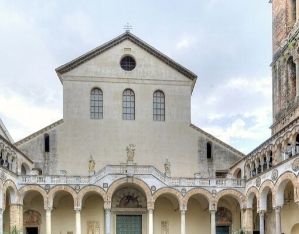A little gem in old Salerno, these gardens run halfway along an ideal path that joins the Villa Comunale and the Castle of Arechi. The charm of the gardens lies not only in the surrounding landscape, but the theory that in the Middle Ages they were home to the Salerno Medical School.
The current configuration of these gardens, which are owned by the local council, is the result of a restoration carried out in 2000. Some elements date back to the 17th and 18th centuries, and are associated with the history of prestigious Salerno families. The last owner, Professor Giovanni Capasso, donated the property to the Asilo di Mendicità after the Second World War. Its origins, however, are much older, dating back as far as the twelfth century if not more, as chronicled in a very old parchment kept at the Abbey of Cava. In the early 14th century, Matteo Silvatico created an “Orto dei Semplici” medicinal garden, a forerunner of future European botanical gardens, where he grew plants for active ingredients to be used therapeutically; he also taught Medical School students (ostensio simplicium) here. The medieval garden sits some two metres below current ground level; today, its six terraces spans a height difference of more than 16 metres, an ideal morphology for creating a waterway that feeds nine fountains. Of particular interest are the so-called Fountain of Palazzo Capasso, a nymphaeum decorated in rocaille from before the 18th century, and the Fountain of the Gorgon. Over 200 plant species were planted in the garden, for the most part used by the Medical School and described in Silvatico’s Opus Pandectarum Medicinae; these plants include the legendary mandrake (Mandragora officinalis) with its extraordinary powers, the Colocasia esculenta and Indian ginseng (Withania somnifera).




